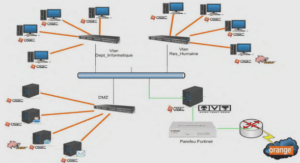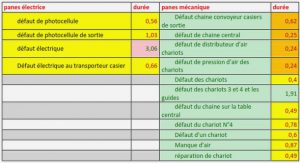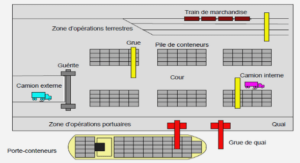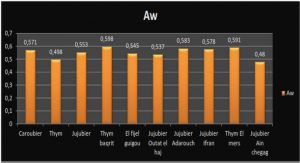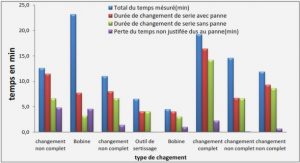METAL MATRIX COMPOSITES
Definition of Problem
Introduction
Metal matrix composites (MMCs) reinforced with ceramic particulate have been used in a wide range of structural and functional applications, especially in automotive, aerospace, and defense industries due to their superior properties compared to monolithic metallic alloys [1-3]. However, barriers to their wide applications concerning manufacturing and processing still exist. Particularly, challenges of welding technique for joining complex structure must be overcome to enhance the engineering usage of these metal matrix composite materials. The joining of MMCs was first explored by using conventional fusion welding techniques such as Tungsten Inert Gas (TIG) or Metal Inert Gas (MIG) because they are relatively well developed and have good affordability. Although problems such as reinforcement segregation, porosity, chemical reaction may arise during fusion welding of MMCs, sound welds can be obtained with special attention to the joint preparation and design, selection of welding methods, process parameters and filler metals [4-7]. Successful TIG and MIG welding for Al-SiC MMCs were obtained with ER4043 filler wire [4]. DURALCAN has also successfully applied both TIG and MIG welding processes to foundry and wrought aluminium MMCs for surface defect correction and some structural applications [6]. Some precautions and tips need to be followed carefully to produce sound welds. For instance, proper joint preparation and good joint design are the base lines for welding MMCs. Welding practice with low heat input and high silicon content filler wire could minimize the formation of AI4C3 phase during the welding of SiC reinforced aluminium MMCs, and the use of magnesium-containing filler could inhibit the dewetting and clumping effects of AI2O3 particles during the arc welding of AI2O3 reinforced aluminium MMCs [6]. Compared with arc welding processes, laser beam welding (LBW) has great advantages by using a controllable high intensity heat source. First, the deep and narrow fusion zones associated with laser welding result in a much smaller heat affected zone in comparison with arc welding techniques [8]. Thus, less thermal distortion and mechanical property reduction can be expected. Furthermore, laser welding has advantages for welding smaller components and for welding heat sensitive components due to its precise control [9]. In addition, laser welding has very good process flexibility as the laser heat input can be delivered through optical fibers [10]. It can be performed in various environments and welding can even be realized in locations inaccessible to other welding processes.
Application of laser welding for joining Al-MMCs reinforced with SiC and AI2O3 particles has been investigated. The majority of investigations have emphasized the effects of chemical reaction between the matrix and reinforcement on the joint quality. Researchers have gained some understanding of reaction mechanisms and skills to control these undesirable reactions in laser welding of MMCs, mainly concentrated on Al-SiC and AlAI2O3 systems. The formation of needle-like AI4C3 and spinel phase (MgA^CU) can be observed in laser welding of Al-SiC and A1-A12O3 MMCs respectively [11-12]. These phases may act as stress concentration source and thus have a negative influence on mechanical properties. It is suggested that minimum superheating and short melting time [12-13], the use of silicon filler or silicon containing matrix alloy [14], and the use of titanium filler [15-16] would be recommended for Al-SiC MMCs; while aluminium matrix with magnesium content lower than 1 wt% would be preferred for AI-AI2O3 MMCs [17]. However, complete elimination of these harmful phases is difficult and the chemical reaction problem is material specific. Therefore, any change of the reinforcement or the matrix could result in a completely different issue to resolve.
On the other hand, friction stir welding (FSW), as a solid state process, seems to be promising as it provides the opportunity of joining MMCs components without typical problems encountered during fusion welding. A number of research works have been reported showing the feasibility of FSW for joining Al-based MMCs reinforced with various ceramic particles. The tensile strength of FSW joints could reach 60-84 % of the parent metal strength [18-20]. An appropriate post-weld artificially aging treatment may further improve this joint efficiency depending on the matrix alloy and its initial temper [18]. These behaviors can be attributed to the concurrent effects of different microstructural
modifications induced by the FSW process such as the refinement of grain structure, and the overaging of the matrix alloy. Nonetheless, an important issue is the severe welding tool wear which occurs during FSW of the composite materials. This tool wear may not only reduce lifetime of welding tool and thus increase the cost; but may also affect the performance of FSW joints. It is remarkable that a self optimization phenomenon of tool shape was observed in the study of FSW of AA6O6I-AI2O3 MMCs [21]. No additional tool wear can be detected after a sufficient welding distance for the same set of welding parameters.
In order to overcome challenges in joining AI-B4C MMCs, the present study is intended to evaluate the weldability of AAHOO-B4C MMCs by laser beam welding and friction stir welding. AI-B4C MMCs are principally used as neutron absorber in spent nuclear fuel storage and transportation due to its high boron (10B) concentration and thus high neutron absorption capability [22-23]. Increasing demand for joining components of AI-B4C MMCs has been posed in applications with complex structure. The achievement of sound joints is considered as one of the important milestones for widespread application of AI-B4C MMCs as engineering materials. However, the investigation of welding techniques for AI-B4C MMCs is still in its initial stage. Studies on the feasibility of welding technique for the material have been rarely reported in the literature [5, 18, 24]. Therefore, systematical research works were carried out in the present study in order to understand the welding mechanism and to improve the mechanical performances of joined assemblies made of A1-B4C MMCs. The effects of the LBW and FSW on the microstructural and mechanical properties of AI-B4C MMCs welds were studied.
Objectives
The objectives of this study are detailed as follows. 1. To evaluate the feasibility of laser beam welding and friction stir welding for joining A1-B4C MMCs; 2. To optimize the mechanical performances of AI-B4C MMCs through adjusting the process parameters of these two welding techniques; 3. To study the effects of the LBW process parameters on microstructure and mechanical properties of the AI-B4C MMCs 4. To investigate the effects of the FSW process parameters on microstructure and mechanical properties of the AI-B4C MMCs; 5. To study the effects of FSW on microstructure and mechanical properties of dissimilar joints between the monolithic aluminium alloys and the AI-B4C MMCs.
|
Table des matières
ABSTRACT
RÉSUMÉ
ACKNOWLEDGEMENT
PUBLICATIONS
NOMENCLATURE
LIST OF TABLES
LIST OF FIGURES
CHAPTER I DEFINITION OF PROBLEM
1.1 INTRODUCTION
1.2 OBJECTIVES
CHAPTER II LITERATURE REVIEW
2.1 METAL MATRIX COMPOSITES
2.1.1 Selection of MMCs
2.1.2 AI – B4C Metal Matrix Composites
2.2 WELDING OF MMCS
2.2.1 Introduction
2.2.1.1 Fusion Welding Processes
2.2.1.2 Solid State Welding Processes
2.2.1.3 Summary
2.2.2 Laser Beam Welding
2.2.2.1 Introduction
2.2.2.2 Process Consideration
2.2.2.3 Laser Welding of MMCs
2.2.3 Friction Stir Welding
2.2.3.1 Introduction
2.2.3.2 Process Parameters
2.2.3.3 FSW of Aluminium Alloys
2.2.3.4 FSW of MMCs
CHAPTER III METHODOLOGY
3.1 MATERIALS
3.2 WELDING PROCEDURES
3.3 CHARACTERIZATION AND ANALYSIS
3.3.1 Metallographic sample preparation
3.3.2 Microscopy and phase identification
3.3.3 Tool wear measurement
3.3.4 Microhardness and tensile tests
3.3.5 Corrosion test
CHAPTER IV LASER WELDING OF AA1100-16 VOL.% B4C METAL MATRIX COMPOSITES
4.1 MICROSTRUCTURAL CHARACTERIZATION
4.1.1 Laser Welds without Filler
4.1.2 Selection of Filler Material
4.1.3 Laser welds with Ti filler foil
4.1.4 Laser welds with Ti filler wire
4.2 MECHANICAL PROPERTIES
4.2.1 Microhardness
4.2.2 Tensile Results
4.2.3 Fractography
4.3 SUMMARY AND CONCLUSIONS
CHAPTER V FRICTION STIR WELDING OF AA1100-B4C METAL MATRIX COMPOSITES
5.1 TOOL WEAR
5.2 MICROSTRUCTURES
5.2.1 B4C particle characterization
5.2.2 Fragmentation of constituent particles
5.2.3 Grain refinement of the aluminium matrix
5.3 MECHANICAL PROPERTIES
5.3.1 Microhardness
5.3.2 Tensile properties
5.3.3 Fractography f
5.4 CORROSION PROPERTY
5.5 SUMMARY AND CONCLUSIONS….
CHAPTER VI MICROSTRUCTURE EVOLUTION AND MECHANICAL PROPERTIES OF DISSIMILAR FRICTION STIR WELDED JOINTS BETWEEN AAIIOO-B4C MM C AND AA6063 ALLOY
6.1 MACROSCOPIC STRUCTURE
6.2 MICROSTRUCTURE
6.3 MECHANICAL PROPERTIES
6.3.1 Microhardness
6.3.2 Tensile properties
6.4 SUMMARY & CONCLUSIONS
CHAPTER VII CONCLUSIONS AND RECOMMENDATIONS
7.1 CONCLUSIONS
7.2 RECOMMENDATIONS
REFERENCES
APPENDIX
![]() Télécharger le rapport complet
Télécharger le rapport complet

